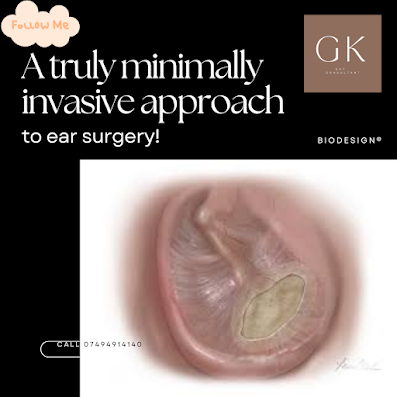Introduction
The ECM: A Guiding Latticework of Cellular Growth
The extracellular matrix is a remarkable latticework of
proteins and structural molecules present in our tissues. In the context of
Biodesign, this ECM plays a pivotal role in guiding cellular growth and
facilitating tissue repair. Cook's proprietary processing methodology is the
key to harnessing the power of the ECM while preserving its natural matrix
molecules like collagen, proteoglycans, and glycosaminoglycans.
The Birth of a Scaffold for Regeneration
By decellularizing the SIS material and preserving the
essential matrix molecules, a remarkable scaffold is created. When implanted,
this scaffold provides an ideal location for host cells to infiltrate and
remodel into vascularized tissue. This innovative approach paves the way for
numerous applications, with one standout product being the Biodesign Otologic
Repair Graft.
The Biodesign Otologic Repair Graft: A Minimally Invasive
Breakthrough
Ear surgery has seen a significant transformation with the
introduction of the Biodesign Otologic Repair Graft. Designed specifically for
tympanic membrane perforation closure, this grafting biomaterial has become a
game-changer in the field of otology.
One of the most significant advantages of the Biodesign
graft is its truly minimally invasive approach. Unlike traditional methods that
require donor site harvesting and often leave additional scars for patients,
Biodesign eliminates the need for such invasive procedures. This results in
reduced post-operative discomfort and quicker recovery times for patients.
Enhanced Precision and Convenience
Surgeons now have access to a grafting material that is easy
to manipulate, allowing for improved precision during graft placement.
Additionally, the convenient sizing and packaging of the Biodesign graft
simplify the surgical process, making closures more efficient and effective.
Circular size options come with a case, while square sheet sizes can be easily
cut to a preferred size and shape.
Complete Closure with Neovascularisation
The Biodesign Otologic Repair Graft offers more than just
closure; it ensures neovascularisation—a process of new blood vessel formation
in the tissue. This fosters improved tissue healing and regeneration,
contributing to better overall outcomes for patients.
Conclusion
https://www.ccmed.co.uk/product/biodesign-oto/


